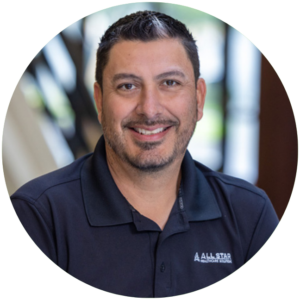Locums CME is a bi-weekly roundup of recent news that matters to locum tenens providers. Stay in the loop on what’s new in the locums industry, and make the most of the locum tenens lifestyle with our fresh finds.
Federal Efforts Stumble in Addressing Rural Healthcare Deserts Despite Decades of Funding
Jan. 30, 2024
Valley-Wide Health Systems, a healthcare system in the heart of southern Colorado’s Costilla County, is grappling with recruiting full-time medical providers. The system offers its providers compelling incentives like federal loan repayments, bonus Medicare payments, and expedited visas for foreign clinicians, but their efforts often fall short.
This predicament is not unique to Costilla County; it mirrors a nationwide struggle many rural areas face with primary care clinician shortages. These shortages have led to prolonged wait times in facilities, which compels patients to undertake lengthy journeys for necessary care.
Policymakers are also finding themselves restricted because they aren’t able to gather precise data from these underserved regions because there’s a lack of sufficient healthcare personnel. Despite some hefty federal investments to mitigate these physician shortages, over 180 regions, including Costilla County, have been underserved for decades, and any initiatives to broaden shortage area definitions to encompass nurse practitioners and physician assistants have been met with hurdles, rendering any legislative efforts to ease the situation ineffective.
The enduring nature of these shortage areas casts doubt on the efficacy of federal initiatives designed to attract and retain primary care providers. While these federal efforts support thousands of clinicians in underserved communities, evidence suggests that such incentives may not significantly influence long-term physician distribution. Accurately measuring shortages is further complicated by inconsistent data collection at the state level and reliance on antiquated criteria, undermining the equitable distribution of resources.
Recent strides in data collection like analyzing insurance claims to track primary care provider distribution, offer a glimmer of hope for a deeper understanding of workforce allocation. But, the scarcity of publicly accessible, comprehensive data impedes the equitable management of patient-to-clinician ratios across different states.
Some state-level initiatives in rural areas to recognize nurse practitioners and physician assistants in shortage areas signal a move toward more precise assessments of primary care needs. For example, Costilla County recently added a physician assistant, which marks a step forward in addressing its local shortage. The story from KFF Health offers insights through the lens of a single community hospital, but it echoes the same challenges other hospitals face.
Your Locums Prescription
Top 10 States Dealing with Healthcare Worker Shortfall
Feb. 1, 2024
According to the AMA, the United States faces a critical shortage of healthcare workers, with an estimated shortfall of up to 124,000 physicians by 2034. A list from CompHealth details 10 of the states that have been particularly hard hit.
The top 10 states with the highest demand for healthcare workers in 2024 are:
- California
- New York
- Pennsylvania
- Texas
- Florida
- Wisconsin
- Illinois
- Indiana
- Massachusetts
- North Carolina
According to CompHealth, nearly one-third of North Carolina’s population hasn’t seen a primary care physician in six years, which has prompted initiatives like student loan repayments and increased funding for healthcare recruitment. Massachusetts struggles with physician burnout, leading to limitations in patient care, while Indiana’s rural counties face significant healthcare worker shortages, driving patients to urgent care and emergency rooms.
Various states on the list also grapple with degrees of healthcare worker shortages driven by factors such as aging populations, rapid population growth, and geographical disparities. Efforts to address these shortages include funding residency slots, expanding nurse practitioner roles, and considering legislative changes to increase healthcare worker availability.
The complete article from CompHealth examines each state’s issues and includes strategies for addressing them.
Tips to Help Shape Your Interview Strategy in Healthcare
Feb. 1, 2024
The interview is an essential part of any job search, whether looking for full-time or locums gigs. According to Larry Misquez, senior director at All Star Healthcare Solutions, healthcare organizations have shifted the focus of their interview methods. He says organizations are now incorporating virtual formats in addition to the more traditional face-to-face meetings.
Misquez offered a few tips to providers to help them prepare for any upcoming interviews in a recent blog post by All Star:
- Prepare to get behind a camera: Misquez suggests providers should prepare for both video and in-person interviews. But these days, the video call is standard. Facilities will often use the video call for an initial discussion, opting for a face-to-face call later.
- Don’t be too casual: Video calls have slightly different expectations now. The virtual setting allows for a more casual format, but providers should at least prepare in business casual attire.
- Locum tenens vs. direct hire: Locum tenens interviews take place often over the phone, Misquez says, and candidates should advised to find quiet settings and do their best to minimize background noise for phone interviews.
As a rule, Misquez says candidates should take time before any interview to familiarize themselves with interviewers, understand the organizational structure, and get to know key personnel. He says interviewers will also often ask questions about what contributions each provider can make to the program, future challenges the field faces, and any meaningful experiences during training. Read the article from All Star to delve deeper into interview strategies and questions for locums and direct hires.
Healthcare Heroes Podcast: Locum Tenens Insights with Dr. Andrew Wilner
Feb. 6, 2024
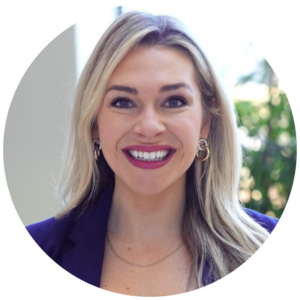
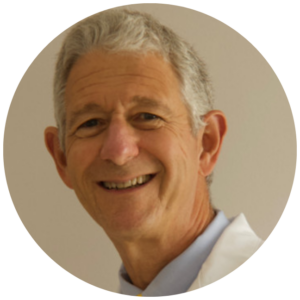
A few of the key points highlighted in the discussion:
- Variety in Career Paths: Locum tenens offers physicians an alternative career path, allowing them to navigate various medical practices while maintaining flexibility.
- Work-Life Balance: Locum tenens work presents opportunities for achieving a better work-life balance than traditional private practices, catering to physicians seeking more control over their schedules.
- Creativity in Medicine: The discussion explored how physicians express creativity in their work, whether through clinical practice, academia, or other pursuits, shedding light on the diverse ways creativity manifests within the medical field.
- Challenges and Benefits: Dr. Wilner also addressed the challenges and benefits associated with locum tenens work, providing insights for physicians considering this career option.
- Options for Physicians: Physicians interested in exploring locum tenens work can find valuable information on navigating the transition and understanding the unique dynamics of this practice model.
The full episode provides some comprehensive insights into new career options from Dr. Wilner’s unique perspectives as a locum tenens industry expert.
Dr. Wilner Recognized by FeedSpot for One of The ‘Best Physician Podcasts’
Jan. 30, 2024
Dr. Andrew Wilner’s podcast “The Art of Medicine” was selected by Feedspot as one of the “20 Best Physician Podcasts” last month. The list was compiled from thousands of podcasts on the web and ranked “by traffic, social media followers & freshness.”
Dr. Wilner’s podcast ranked at No. 5 on Feedspot. The company said its rubric for selecting the top physician podcasts was based on the following:
- Expertise and Credibility
- Content Quality and Relevance
- Longevity and Consistency
- Audience Engagement
Feedspot’s research team works to discover new podcasts in niche categories like healthcare or, more specifically, locum tenens. Podcasters can also submit their shows on FeedSpot. Dr. Wilner’s podcast is available for viewers to watch on YouTube or to listen to wherever you get your podcasts. Review the full list from Feedspot, or learn more about Dr. Wilner and his locums expertise.
Physician Wellness Retreat
New AMA Toolkit Revolutionizes Fight Against Physician Burnout with Listening Campaigns
Jan. 30, 2024
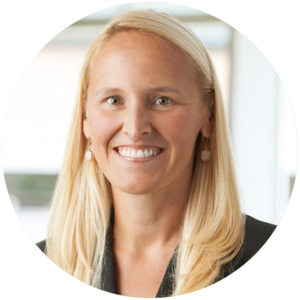
The toolkit Dr. Richards and Dr. Lowndes created features “listening campaigns” that are customizable within healthcare organizations to help administrators and doctors work together to identify and address daily challenges contributing to burnout.
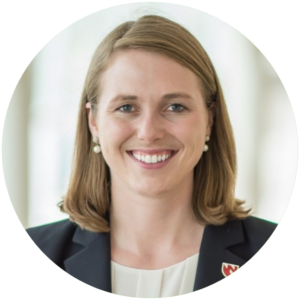
Listening campaigns are flexible in format and duration, engaging physicians through simple exercises like sharing their professional wishes and rating them for prioritization. For the program to be successful, leadership will need to be committed to the program’s implementation.
The AMA STEPS Forward toolkit provides innovative strategies to enhance physician well-being and practice efficiency. If a healthcare team is interested in implementing some of these listening campaigns, they can view the article to learn more about the program or see how to contact Dr. Richards directly.
AMA’s Outlines 3 Steps to Combat Burnout in Well-being Playbook
Feb. 6, 2024
Physician well-being is gaining traction as a crucial focus area within healthcare organizations, with the AMA stressing the importance of meaningful and sustainable changes.
A recent excerpt from the “wellness-centered leadership” playbook from the AMA STEPS Forward® initiative outlines three key steps to improve physician well-being:
- Reducing tasks
- Engaging front-line physicians
- Prioritizing easy changes first
The playbook emphasizes the need to alleviate administrative burdens, such as excessive EHR clicks, rather than adding more responsibilities. This approach is seen as more impactful in the long term for physicians’ well-being.
The AMA’s commitment to reducing physician burnout is evident in its resources, including the “De-implementation Checklist” and “Stop This, Start That Checklist,” which aim to identify and eliminate unnecessary tasks.
AMA’s playbook emphasizes capitalizing on easy wins by addressing seemingly trivial issues that can significantly impact when they get multiplied across the organization. These changes could help reduce burnout and generate goodwill and trust among healthcare professionals and leaders. AMA STEPS Forward offers various open-access toolkits to support physicians and staff thriving within the evolving healthcare landscape. Explore the full article from AMA for more information about how healthcare organizations can combat burnout and improve patient care by prioritizing physician well-being and implementing strategic changes.
Healthcare in Crisis: Physician Shortage Deepens Amid Rising Burnout and Financial Strain
Jan. 30, 2024
As the physician shortage deepens, healthcare leaders are deploying various strategies to mitigate the crisis, but we’ve yet to see how effective these strategies will be.
A recent Medscape survey highlights a disturbing trend: escalating levels of burnout, career dissatisfaction, and clinical depression among healthcare professionals. Alarmingly, 90% of physicians report experiencing symptoms of depression, primarily due to job-related burnout and the weight of their responsibilities.
Compounding this issue, the Centers for Medicare and Medicaid Services have implemented a 1.25% reduction in overall physician compensation, further straining physicians’ financial well-being. This financial pressure, coupled with an alarming rate of professional discontent, has led to a significant departure of physicians from the healthcare field. Medscape’s findings reveal that 71,309 physicians exited the industry between 2021 and 2022, with 26% considering a shift to alternative careers.
Legislators have explored remedies like easing prior authorization requirements and overhauling Medicare’s payment structure to alleviate these pressures. To further address these challenges, there is a push to broaden the scope of practice for non-physician providers and enhance the healthcare sector’s technology infrastructure, including adopting AI tools and telehealth services.
Despite these initiatives, there is an ongoing debate regarding the sufficiency of current strategies to avert a forecasted shortfall of 124,000 physicians by 2034. Becker’s ASC Review sheds light on the looming healthcare crisis, exacerbated by an aging population and unaddressed issues like soaring medical school debt and job dissatisfaction among physicians.
Doctor’s Notes
Nonpartisan Groups Call for AI Integration Into Healthcare
Jan. 17, 2024
The American Legislative Exchange Council (ALEC), a nonpartisan organization of state legislators, called on policymakers to leverage Artificial Intelligence to improve healthcare in America. AI is reshaping healthcare, offering efficiency gains and personalized care. ALEC encourages Lawmakers to embrace AI’s potential instead of stifling it with restrictive regulations.
They claim policymakers can leverage AI to allocate resources effectively by analyzing vast data sets, aiding in decision-making for Medicaid and other programs. AI has the potential to streamline administrative tasks, reduce operational costs, and allow providers to focus on patient care. While AI will not replace physicians, it can ease their workload, mitigate burnout, and improve patient access, particularly in underserved areas.
Tech also helps accelerate research in drug development. AI’s analysis of genetic, treatment, and lifestyle data enhances personalized patient care, optimizing treatments and improving compliance. AI’s promise in improving patient outcomes is vast, with advancements expected in predictive analysis and robotic surgery.
There are severe drawbacks to AI, though. Significant ethical and privacy concerns must be addressed, requiring patient consent and robust security measures. Examine the benefits of AI that ALEC identifies in its full article for more insights into tech’s role in healthcare.
How Legislative Changes to Telemedicine Are Shaping the Future of Healthcare
Feb. 5, 2024
Telemedicine is crucial to healthcare delivery because it offers everyone convenient access to medical services. Over the past three-plus years, legislative changes have significantly shaped the telemedicine landscape, making it more accessible and efficient.
Key shifts in legislation include:
- Expansion Of Telehealth Services: States like New York and California are broadening their telehealth horizons, including various specialties like mental health counseling and physical therapy.
- Parity Of Payment: Several states mandate equal reimbursement for telemedicine services, sparking more enthusiasm among healthcare providers for digital health solutions.
- Changes In Licensure: The Interstate Medical Licensure Compact is making it easier for healthcare professionals to offer services across state lines without the bureaucratic headache associated with multiple licenses.
- Privacy And Security Regulations: Legislators are stepping up with tightened regulations, ensuring that patient information remains confidential and secure in the digital realm, in line with HIPAA standards.
- FDA Regulations: The FDA is rolling out new guidelines for remote monitoring devices and telehealth software, looking to bolster the safety, efficacy, and trustworthiness of these technological advancements in healthcare.
Legislative reforms have made healthcare more accessible and convenient, marking a significant shift toward patient-centered care. Read Forbes’ article for more on how stakeholders can remain informed and adapt to the evolving regulatory landscape.
Telehealth Webinar Examines Intricacies of IMLC, International Practice
Feb. 5, 2024
A recent webinar from Telehealth.org delved into the intricacies of practicing telemedicine across state lines through the Interstate Medical Licensure Compact and other methods across international borders.
The Interstate Medical Licensure Compact (IMLC) streamlines medical licensure for physicians practicing in multiple states — currently, 39 states plus Guam and Washington D.C. signed the Compact. Despite its benefits, the IMLC does not facilitate international telemedicine, and physicians in non-IMLC states must navigate traditional licensure processes or explore telemedicine exceptions and reciprocity agreements.
Special permits, temporary licenses, advocacy efforts, and employment with multi-state entities are viable options for doctors in non-IMLC states. Inquiring physicians should stay updated on legal changes and leverage resources like the Federation of State Medical Boards and Telehealth Resource Centers.
The webinar also discussed that while some states allow evaluation-only telemedicine visits, physicians need to know the legal definitions and limitations on prescribing, especially for controlled substances.
By understanding telemedicine’s legal, ethical, and clinical aspects, physicians can provide safer, compliant, and more effective care to patients worldwide. Take a closer look at these topics, find additional resources, and view the full webinar on telehealth.org.


